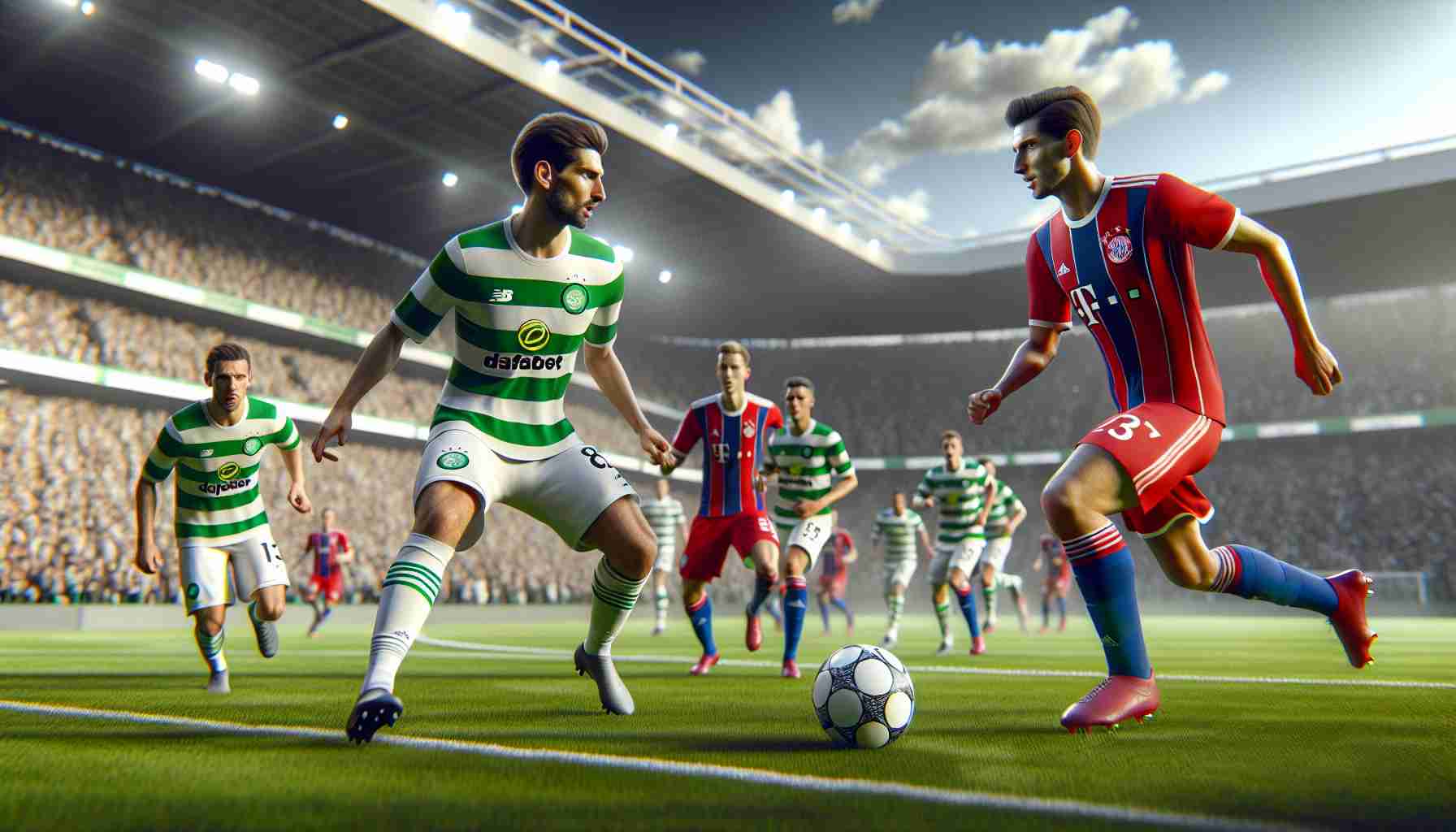- Celtic Park hosts a crucial Champions League match between Celtic and Bayern Munich, heightening excitement and anticipation.
- Bayern Munich, led by Vincent Kompany, seeks redemption after a 3-0 loss to Feyenoord, employing a strategic 4-2-3-1 formation.
- The returning player Olise, alongside wingers Laimer and Leroy Sané, aims to invigorate Bayern’s attack.
- Brendan Rodgers leads Celtic with a strong 4-3-3 formation, focusing on defensive resilience and energy from players like Hatate and Maeda.
- The match is framed as a battle of redemption, passion, and tactical prowess, with both teams eager to assert their strengths.
As the sun dips below the horizon in Glasgow, Celtic Park becomes a cauldron of anticipation. Fans from both sides, draped in a tapestry of green and red, mingle outside, while inside, the Celtic and Bayern Munich squads prepare for a pivotal Champions League faceoff. This isn’t just about pride but a chance to mend a bruised campaign, especially for the squad led by Vincent Kompany, still smarting from their recent 3-0 drubbing at the hands of Feyenoord.
Kompany, trusting his time-tested 4-2-3-1 formation, aims to conquer. The returning Olise, a sensation at the Olympics, takes his place at the frontline poised to weave magic alongside his fellow winger, Laimer. Meanwhile, Leroy Sané and Guerreiro provide their electrifying presence on the flanks, ready to unsettle any defense. As Neuer guards the posts like a seasoned hawk, the formidable presence of Kane looms upfront, waiting to pounce on any opportunity.
On the opposing side, Brendan Rodgers, dynamic and ever-crafty, unleashes a Celtic lineup crafted in a 4-3-3 formation. Defensive resolve is the mantra, with Schmeichel determined to replicate his legendary father’s heroics. The Japanese duo, Hatate and Maeda, charged with relentless energy, anchor the strategy with Idah, eager to seize his chance.
This is more than a match; it’s a narrative of redemption, passion, and strategy—a vivid battle under floodlights. Celtic yearns to etch a new chapter, while Bayern charges in to reaffirm their continental dominance. As the whistle readies to sound, the key takeaway is clear: football, in all its unpredictable glory, always offers a stage for the spectacular.
Celtic vs. Bayern Munich: A Clash of Titans with Global Implications
The Global Significance of the Celtic-Bayern Munich Showdown
The Celtic vs. Bayern Munich match carries much more weight than simply being another game in the UEFA Champions League. This encounter underscores the broad international implications of football, from economic impacts to cultural exchanges. Here’s an exploration of additional relevant information about this high-stakes match and how it extends beyond the pitch.
Key Insights
1. Economic Impact on Local Businesses:
– A Champions League match draws in a significant influx of fans from various locales, boosting local economies. Restaurants, hotels, and shops around Glasgow benefit from increased foot traffic and larger patronage. According to a report by Deloitte, football events can generate millions in economic benefits for host cities through tourism and increased commercial activity.
2. Football as a Cultural Bridge:
– Matches like Celtic vs. Bayern serve as a meeting point for fans of different nationalities, fostering cross-cultural interactions. They provide an opportunity for fans to experience different traditions, food, and celebrations, promoting cultural understanding and exchange.
3. Youth Inspiration and Grassroots Development:
– These marquee matches inspire young athletes, contributing to the growth of grassroots football. Young fans and players can observe world-class talent, such as Leroy Sané or Reo Hatate, which can spark aspirations and drive participation rates in local clubs.
4. Advancements in Sports Technology:
– This game, like many at the highest levels, utilizes cutting-edge technology—be it in player preparation or fan engagement. Innovations such as VAR (Video Assistant Referee) and sophisticated analytics platforms are integral to modern football, impacting both decision-making on the field and enhancing viewer experiences.
5. Strategic Evolution of Football:
– The tactical formations (4-2-3-1 for Bayern Munich and 4-3-3 for Celtic) reflect broader trends in football strategy. Teams constantly adapt to counteract opponents’ strengths and exploit weaknesses, contributing to the game’s dynamic nature.
Critical Questions
– How does international football shape relationships between nations and communities?
International matches function as soft diplomacy tools, where shared experiences and sportsmanship can bridge gaps between cultures and nations.
– What role does football play in combating socio-economic issues?
Football can be a catalyst for community development, offering educational and job opportunities. Programs initiated by clubs often focus on health, well-being, and inclusivity.
– How is player performance data influencing modern football?
Data analytics is revolutionizing team strategies, allowing for more nuanced understanding of player efficiencies, injury prevention, and game tactics.
Suggested Sources
In conclusion, the Celtic and Bayern Munich match epitomizes more than a game of football—it’s a confluence of economic, cultural, and technological forces that reverberate across continents, bringing diverse communities together and influencing the future of the sport.
